

Travelogue
OKTOBEERFEAST 2016
by Rolly Reyes
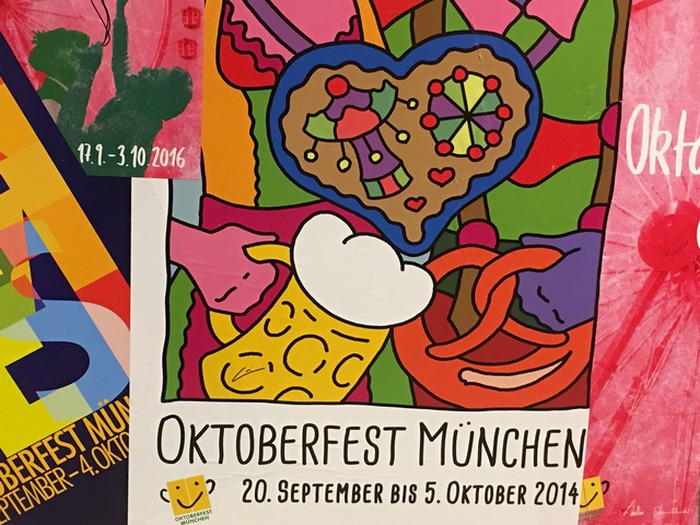
[To view/download all photos, link is https://goo.gl/photos/YkvWdKxRqFdfcZXK8]
I am sharing my week-long respite in Munich to
indulge in those golden foamy beverage accompanied by my shutter-itch
allergy.
(Some quick tips for amateur fotogs like me: when
traveling I always use a light medium sized bridge camera since I don't
have the luxury of time to change lenses. A 25-600 zoom lens is
substantial enough for wide and speedy close-ups. Forget flash and always
use available light no matter what. Bring a good weather-proof bag to
protect your baby from unexpected drizzles. For overall clarity I use
aperture priority fixed at F8, a good bokeh can be achieved at F2.8
without dark corners. Use ISO 100 or 200 whenever possible in full
daylight for best image quality. Auto ISO for dimly lighted conditions.
Shutter speed at 250 or more to stop moving objects or to freeze water
movements and slower to capture action and animated movements. Always
shoot like you have a story to tell without the script. Street signs,
facade, flowers, patina, reflections, silhouettes as frames, artsy angles,
dynamic monochrome and panoramas can provide variation to otherwise boring
shots. Shooting at ground level looking up can add new dimension. Macros on
textures and wide on patterns are also fun to do. Of course the most
important is the right composition.)
Going to Munich at this part
of the year is always an exhilarating experience for a camera bug like me.
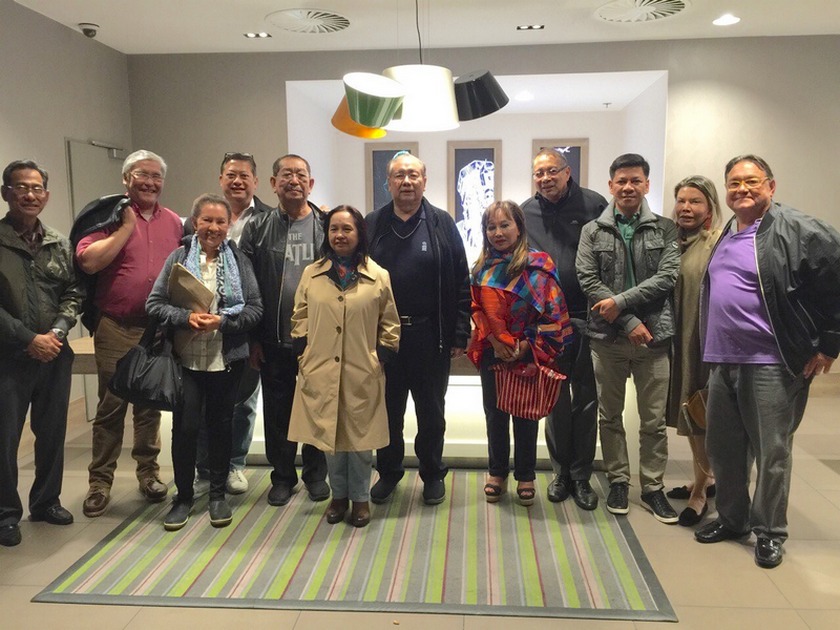
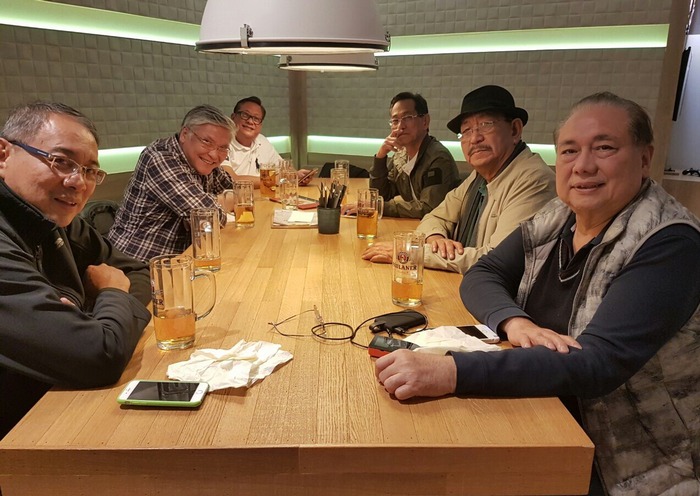
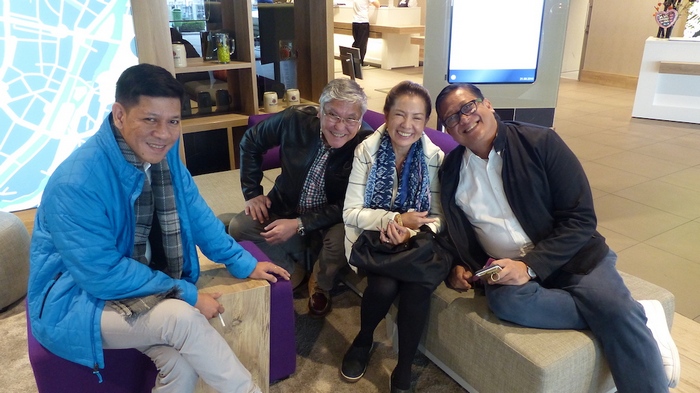
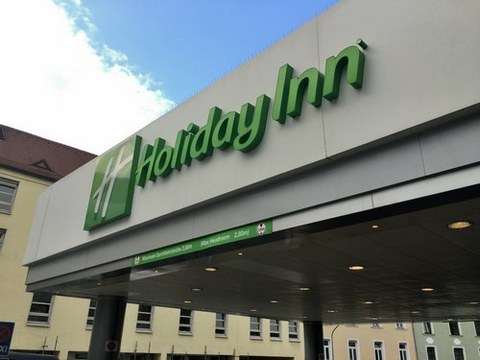
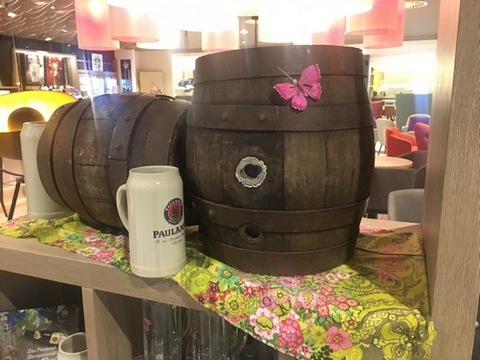
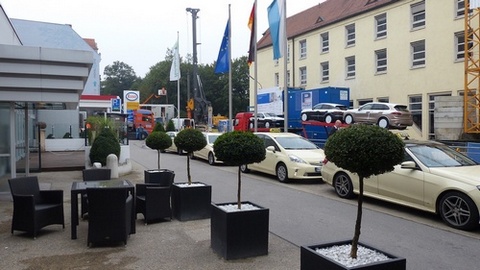
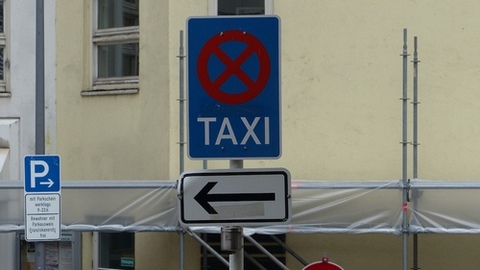
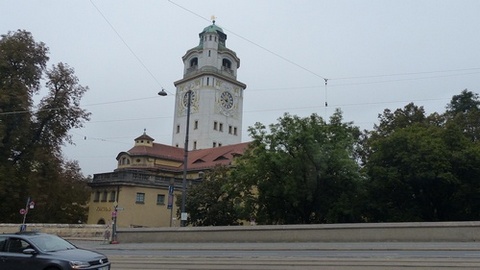
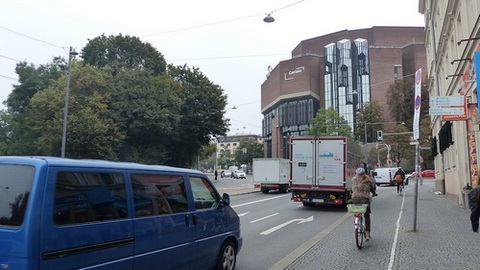
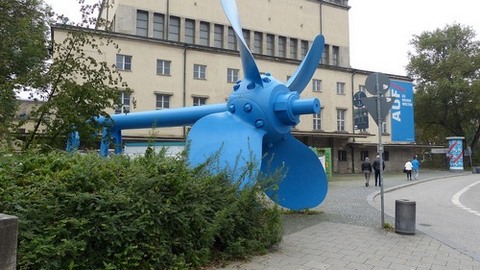
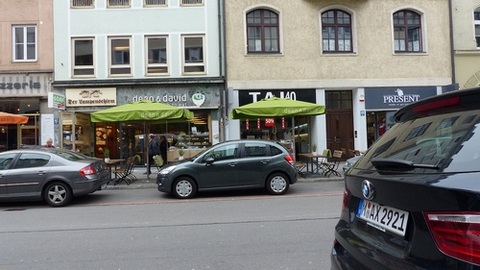
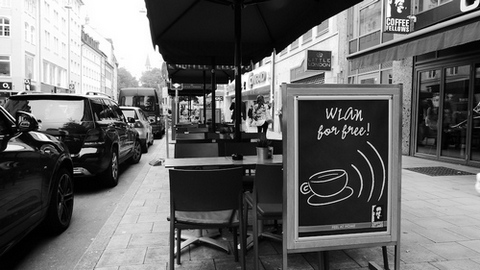
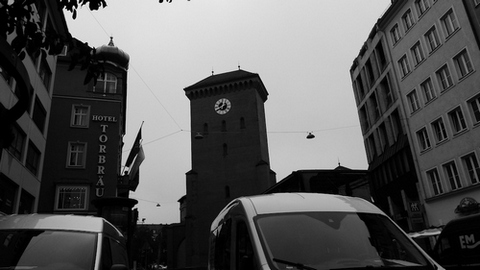
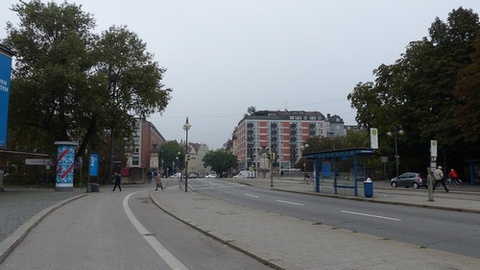
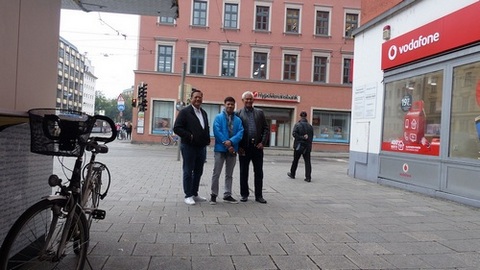
HISTOGRAM SPIKES:
For most tourists, Bavaria, with its own
sense of Gemütlichkeit, beer gardens, quaint little villages, and
culturally rich cities, appears to be the quintessence of Germany. In
fact, nothing could be further from the truth. Of the 16 German Länder, as
the German federal states are called, none is more fiercely independent
than Bavaria: it was an autonomous dukedom and later kingdom until 1871,
when it was incorporated into the German nation state.
For
Bavarians, anything beyond the state's borders remains foreign territory.
The state has its own anthem and its own flag, part of which—the
blue-and-white lozenge—has virtually become a regional trademark
symbolizing quality and tradition. Bavarian politicians discussing the
issue of Europe in speeches will often refer to Bavaria almost as if it
were a national state. They inevitably call it by its full official name:
Freistaat Bayern, or simply "der Freistaat," meaning "the Free State." The
term was coined by Kurt Eisner, Minister President of the Socialist
government that rid the land of the Wittelsbach dynasty in 1918.
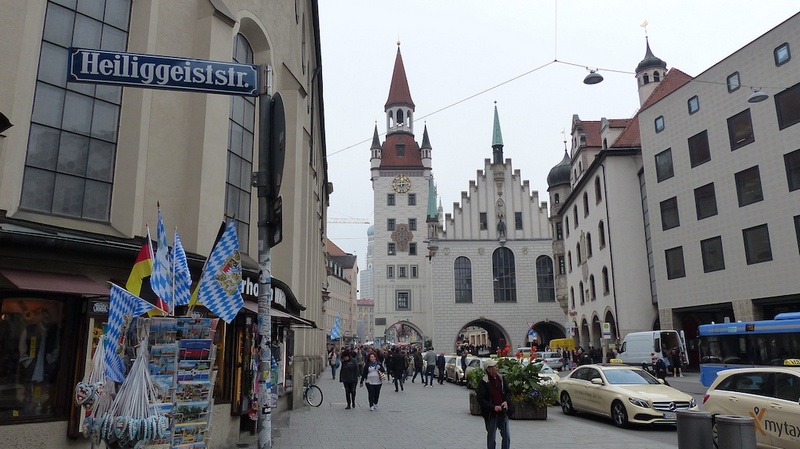
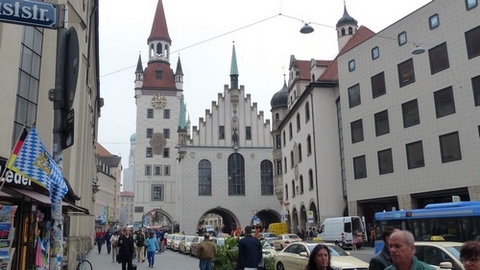
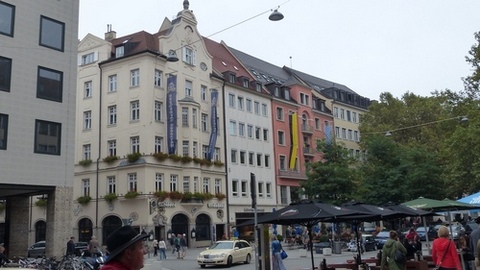
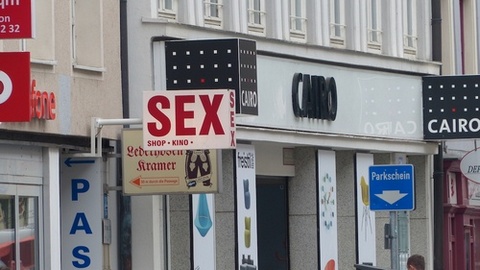
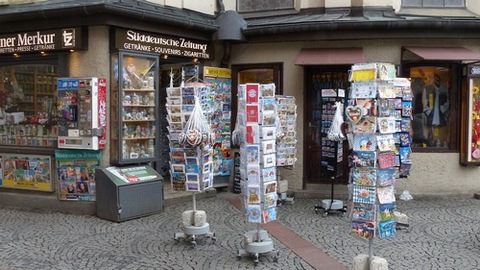
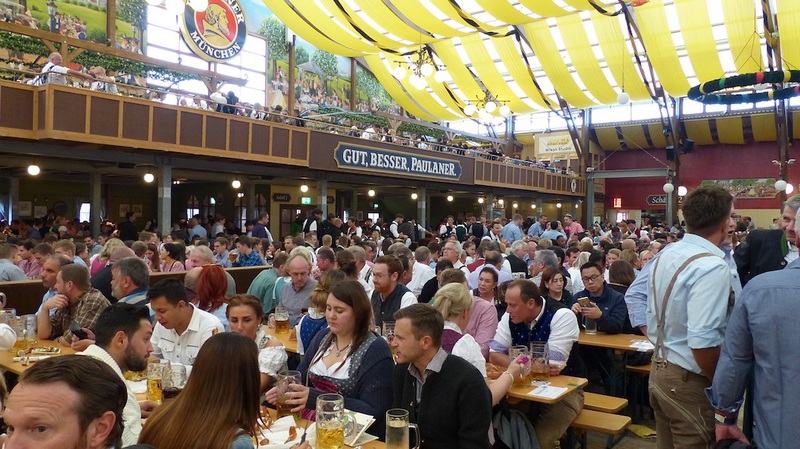
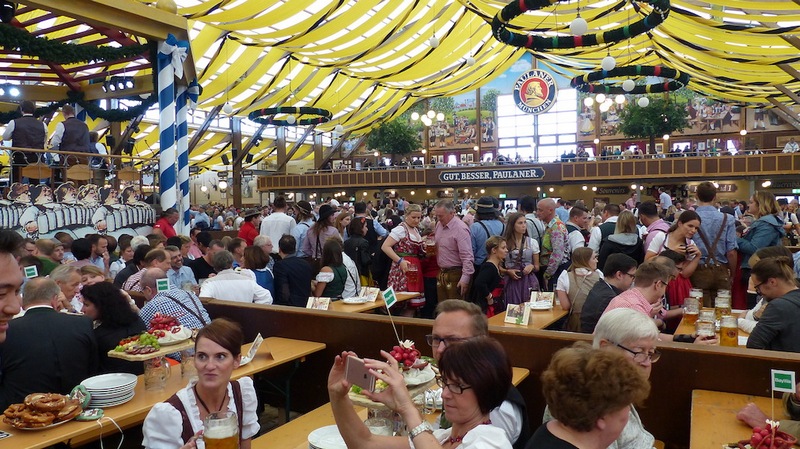
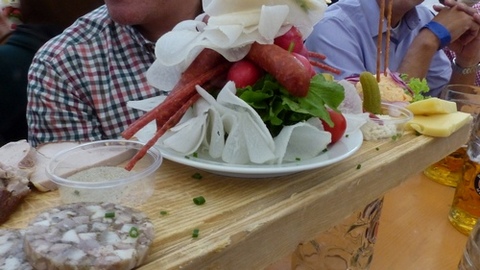
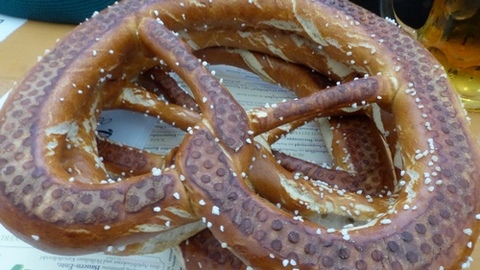
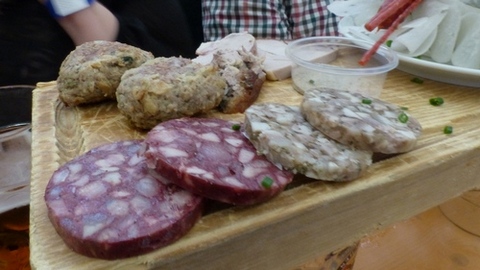
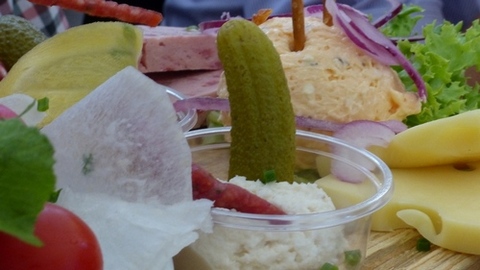
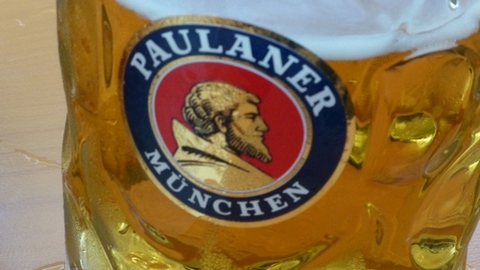
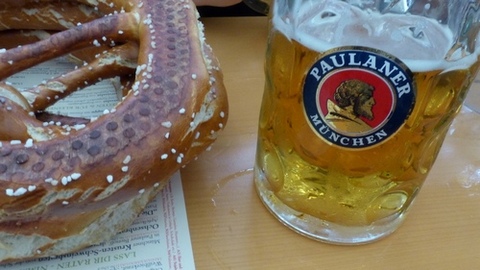
The first Oktoberfest commemorated the wedding of soon-to-be King Ludwig
in 1810, and has grown into a massive public fair that celebrates Bavarian
heritage. This includes the food, the costumes and the traditions. While
it is not just about the beer, beer is deeply ingrained in German culture.
The only beer that can be served at Oktoberfest must be brewed inside
Munich city limits. It must also be brewed to the stringent standards of
the Germany Beer Purity Law. You will only find beer from these 6
breweries there: Augustiner, Hacker-Pschorr, Löwenbräu, Paulaner,
Spatenbräu and Hofbräu.
Half of the festival is a long run of beer
halls large and small. The other half is an equally long midway with
rides, food, games and shopping stalls. Each half is massive. Think of it
like a state fair or a small amusement park. It is a very family friendly
affair, with plenty of amusements, attractions, shows, and culture for all
ages and personality types.
Admission to the festival is free. Just
bring plenty of cash for food, beer, souvenirs and rides.
A tent is
just one huge room with a bunch of people on benches clinking beer steins
and singing along to oompa bands.
That scene plays out constantly
inside each of the 13 large beer tents (and many of the smaller ones). It
is exactly as fun and lively as it looks.
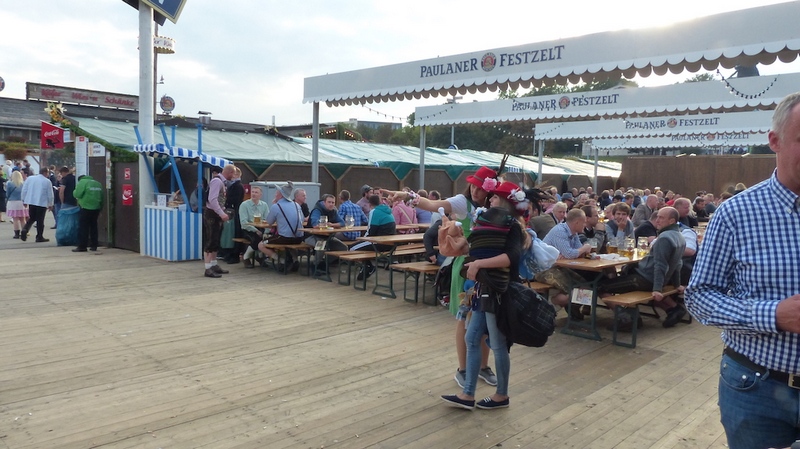
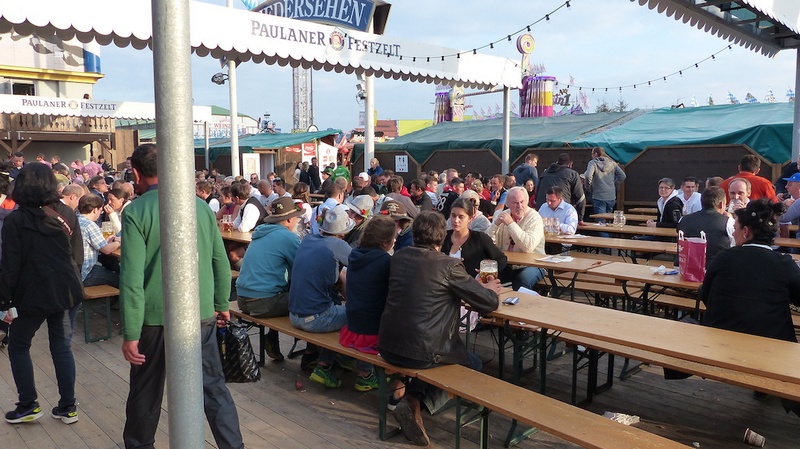
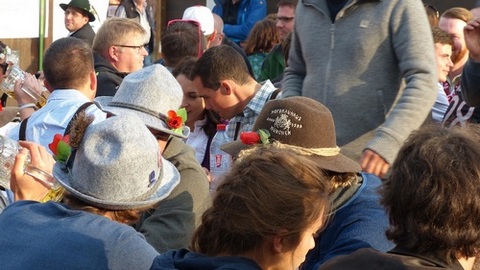
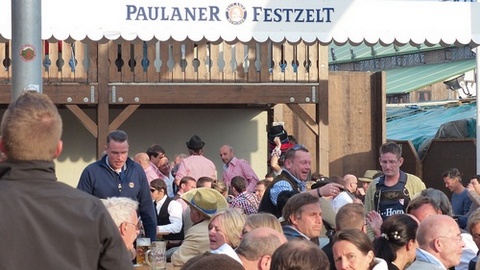
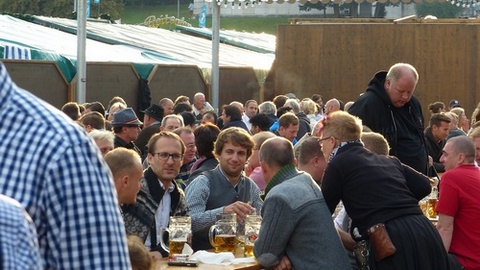
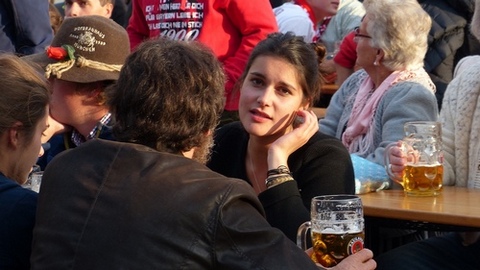
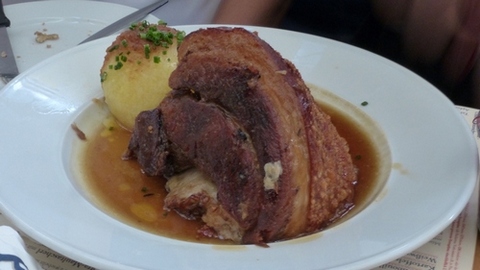
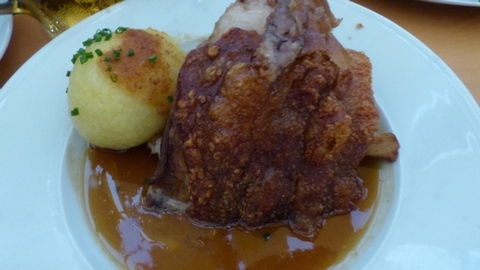
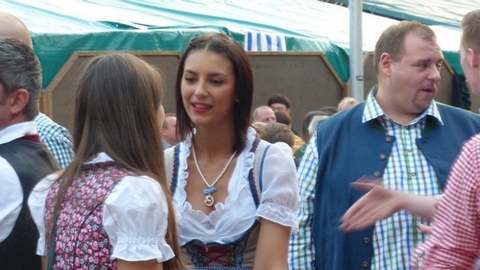
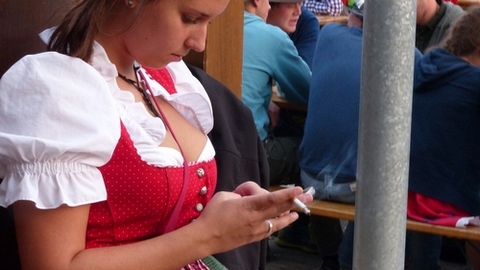
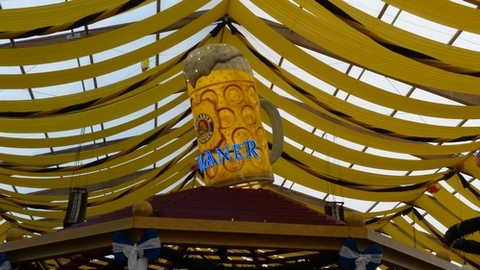
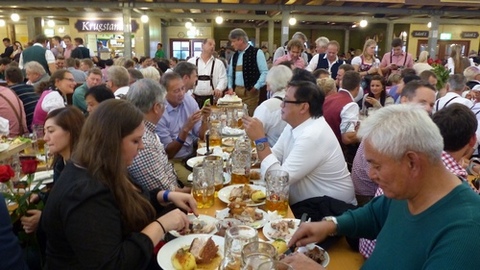
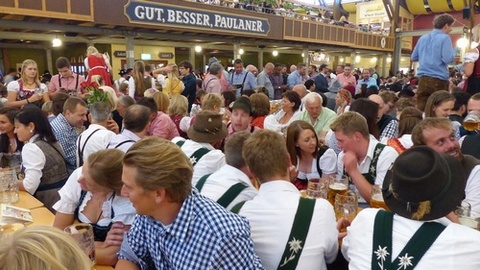
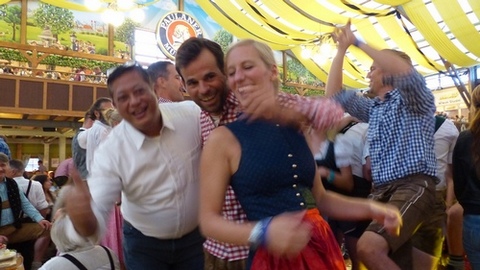
DOING IT MY WAY:
This is my fourth visit to the Holy Land of brewers and drinkers. This
time a little shorter than before at around 7 days. I usually travel light
and that goes the same for the camera I always bring. I brought my nifty
fave DSLR which has been accompanying me for years now. No lens switching
with a formidable 25-600mm zoom consistently open at f2.8 throughout the
zoom length. I have learned to be a fast shooter all these years keeping
my index finger aligned with subjects menu pre-ordered in my mind. Walking
with buddies demands alertness for a 15-20-second stops gives me enough
room to catch up with the stride.
Munich for me is colours, a
festive air to breathe with 6 million people in attendance. Decibels of
glee and merriment abound wherever your head turns. For Germans, it's time
to pause and celebrate. For us outsiders, it is time to get lost, immerse
and blend with this amazing tradition of downing one-liter jugs of the
finest brews available in this part of the planet. "Prost" seems to be a
word understood by all. No need to know names and origins, one is obliged
just to raise that glass of golden liquid that came from those bottomless
wooden barrels. Oktoberfest revelers are light-footed and almost always
primed to dance by stomping and bodily swaying to the tunes of Bavarian
marches and polkas. It is tough to get sober in this 15-day festivities
where an average of 7 million liters are consumed annually.
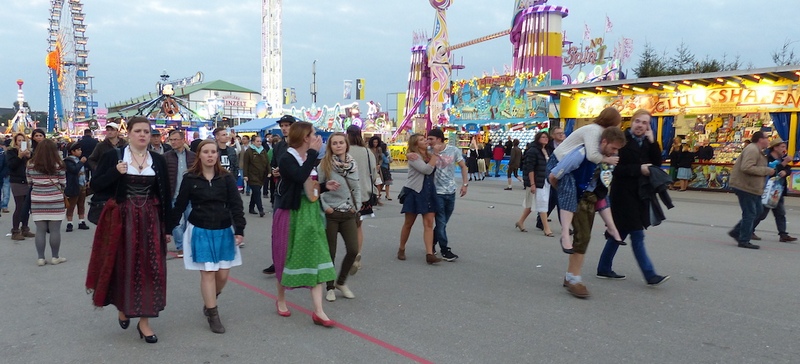
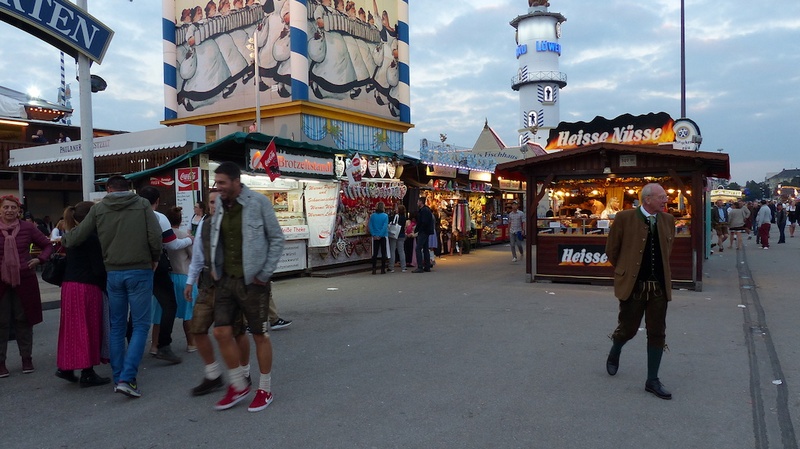
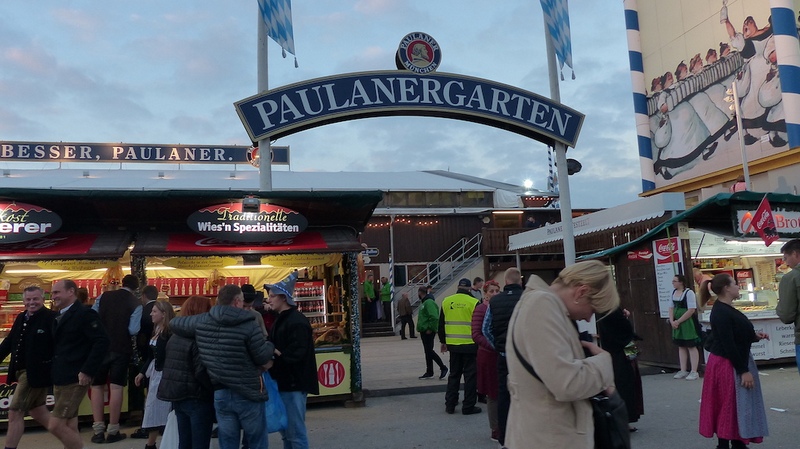
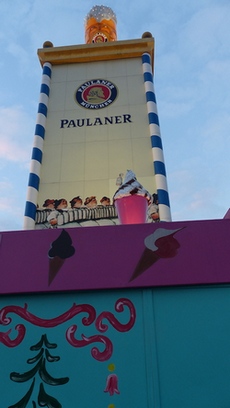
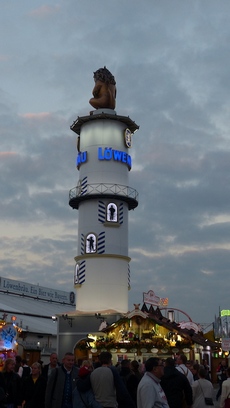
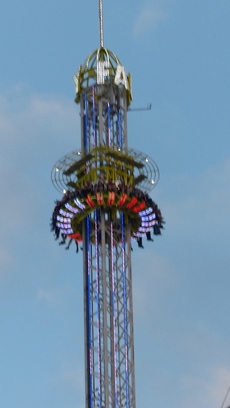
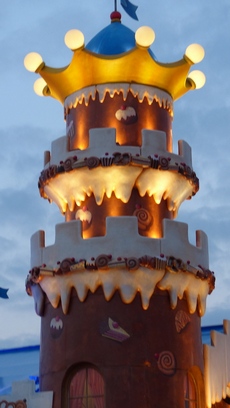
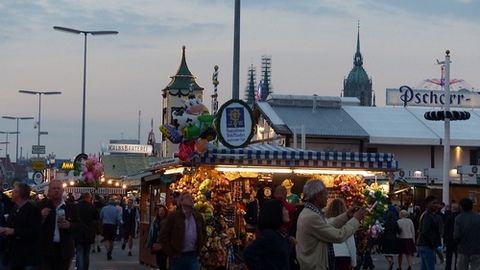
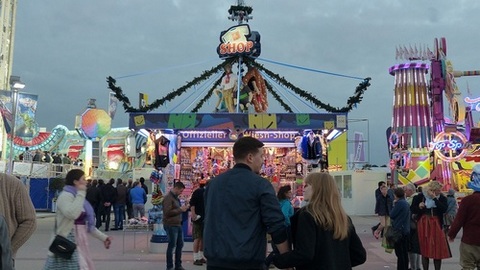
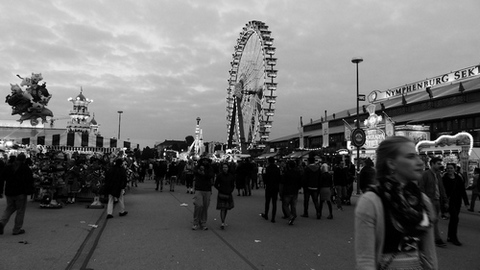
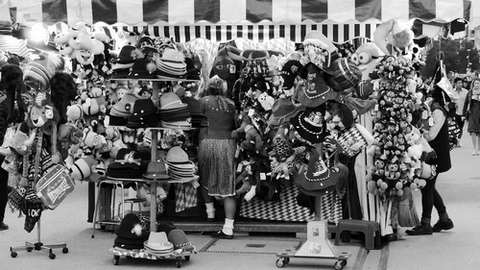
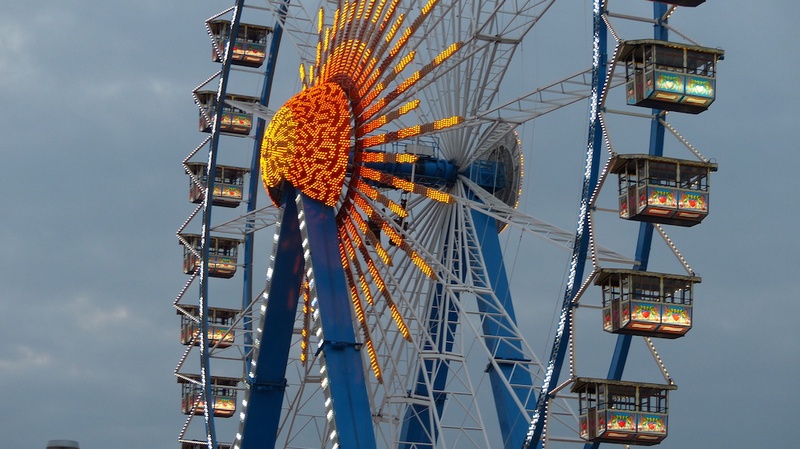
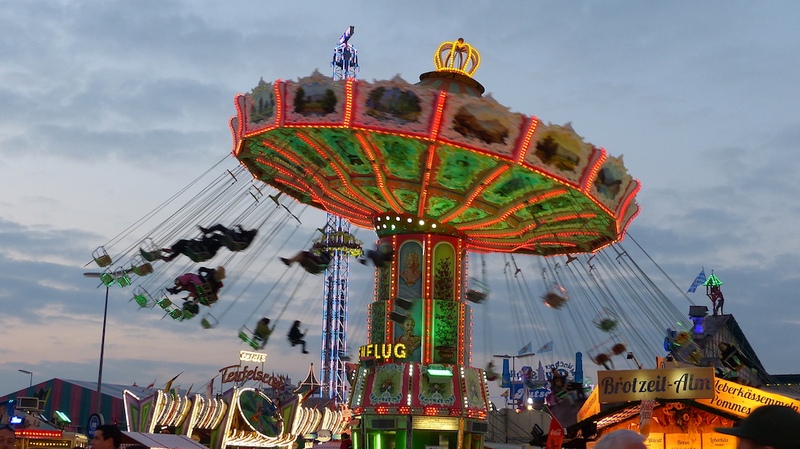
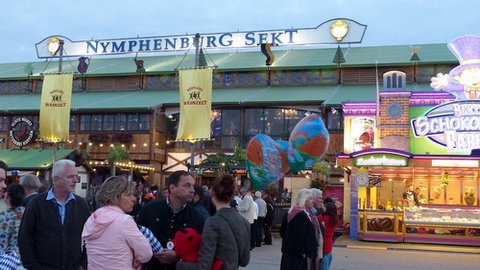
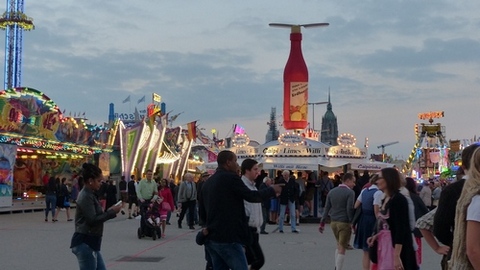
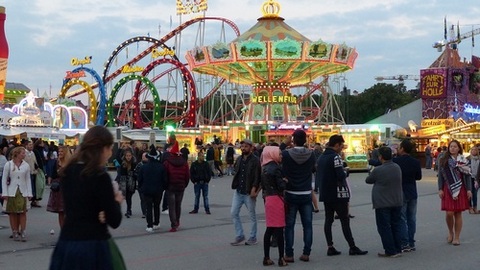
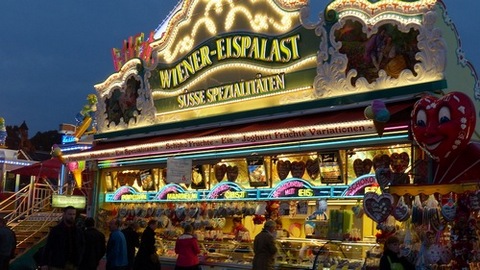
Only
six breweries are allowed to participate in Oktoberfest, all brewing
within the Munich city limits: Hofbräuhaus München,
Spaten-Franziskaner-Bräu, Paulaner Bräu, Löwenbräu, Hacker-Pschorr Bräu
and Augustiner Bräu. Each brewery has a tent where only their beer is
served. While the festival rings in the beginning of October, the beer was
traditionally brewed all the way back in March, when the summer's heat and
rampant bacteria wouldn’t interfere with the brewing process. This beer,
called Märzenbier, was typically higher in alcohol so it could last all
summer. During October, the rest of the year’s beer was consumed to make
room for a new year's worth of beer. Today, the beer is still brewed under
the same style, but it’s now brewed right before the fall.
Food is
always for the carnivorous - white sausages (Bratwurst and Currywurst),
rotisserie chickens, Schweinshaxe usually served with a heap of
traditional sauerkraut and mashed potatoes, beef, ducks, and soft
pretzels.
Oktoberfest beer is typically around 6% ABV, far stronger
and sweeter than typical German lager. That is why you often see
"casualties" lined up on the grassy ground in the perimeter sorrounding
the tents. Me returning? Of course. The pilgrimage is worth the 14-hour
flight.
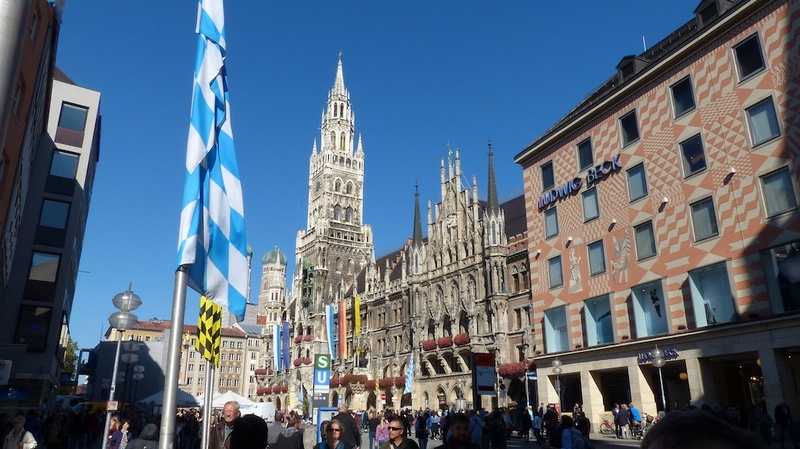
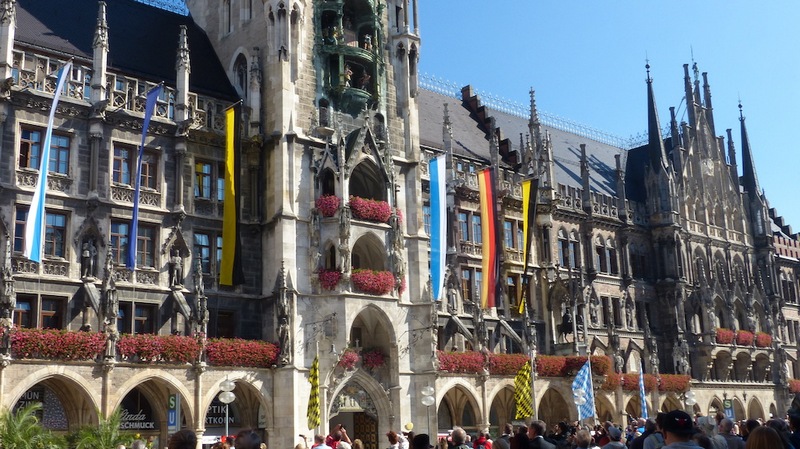
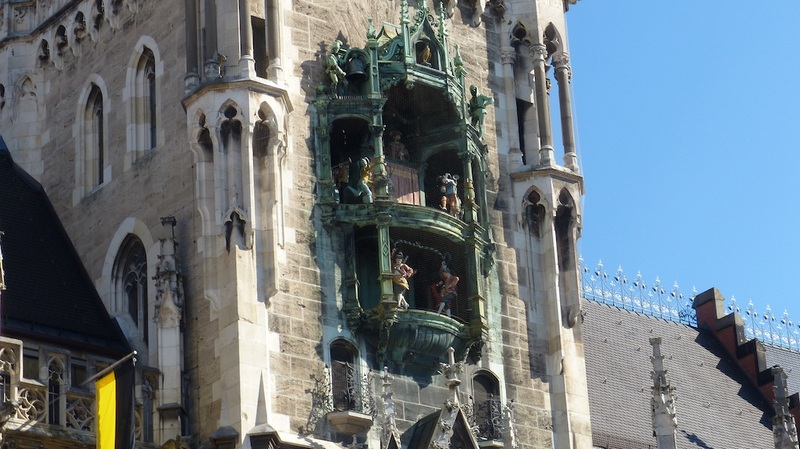
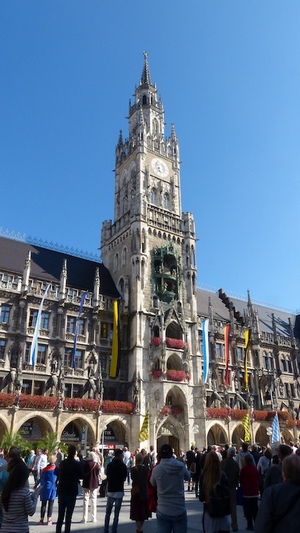
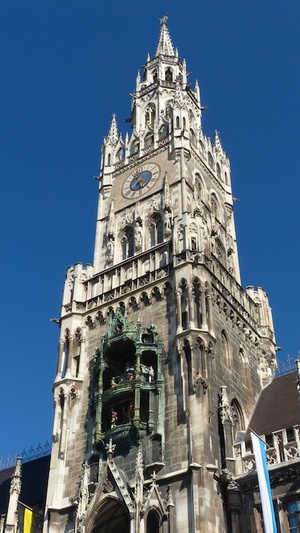
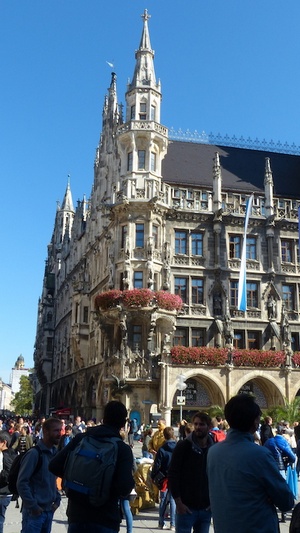
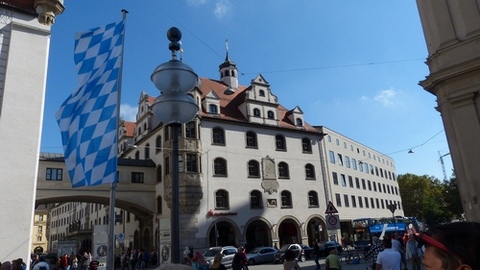
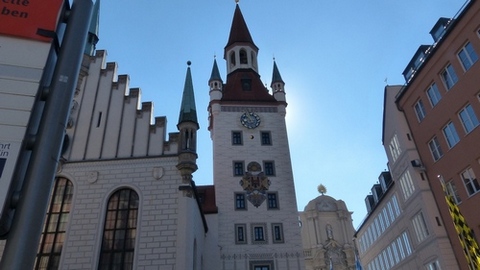
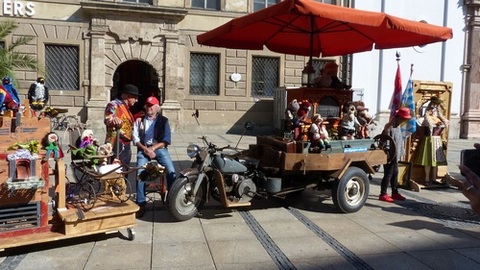
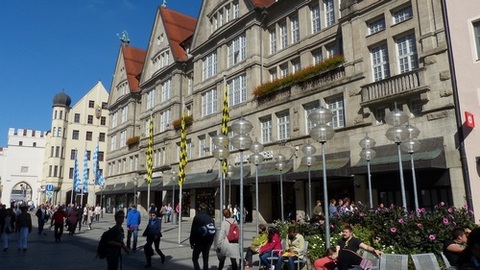
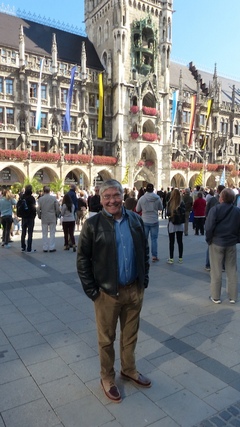
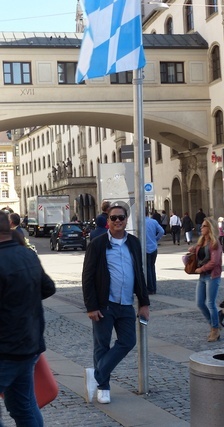
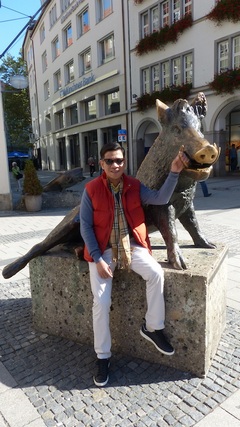
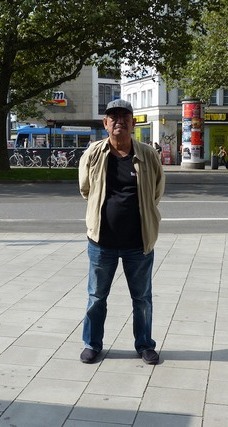
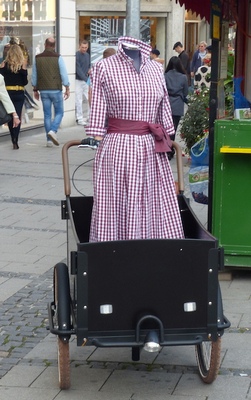
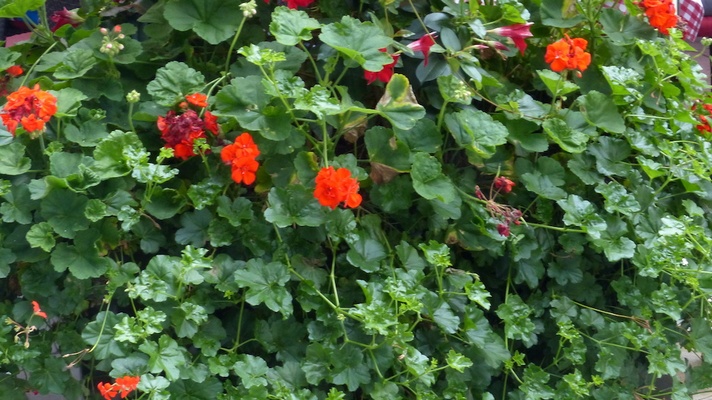
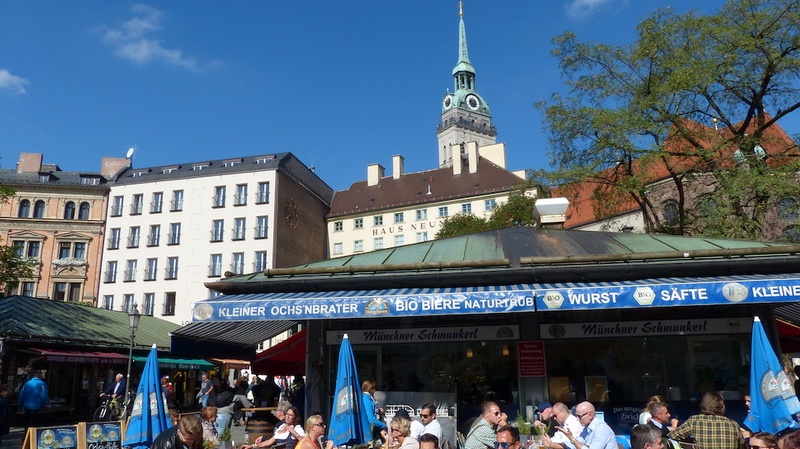
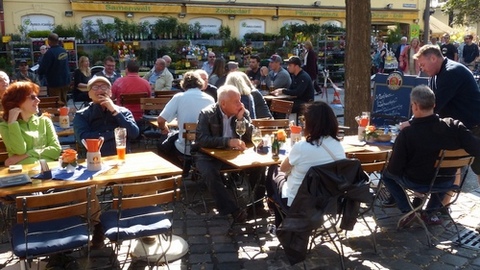
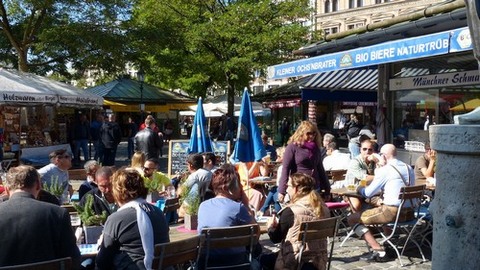
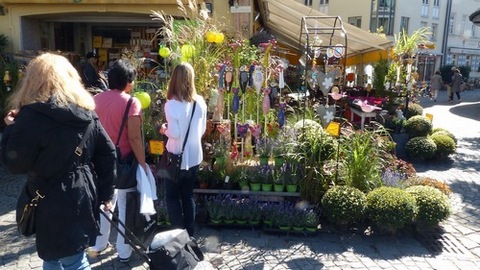
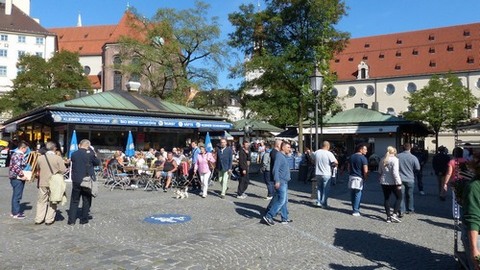
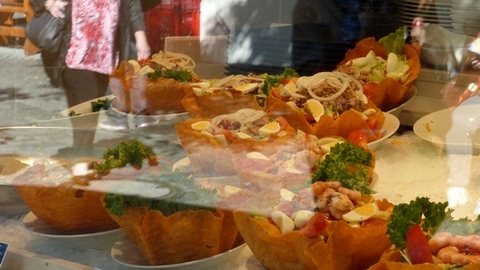
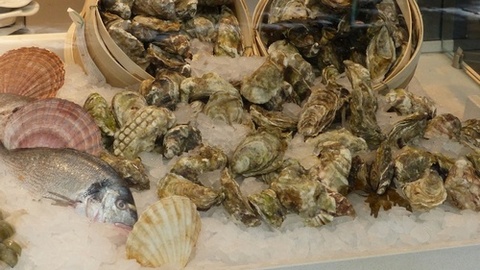
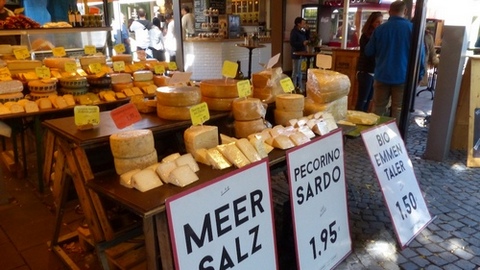
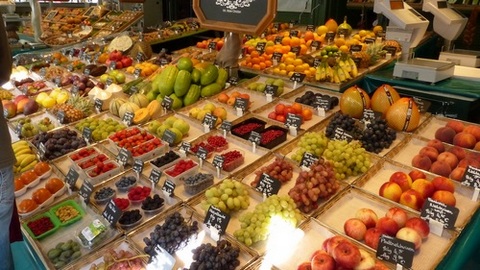
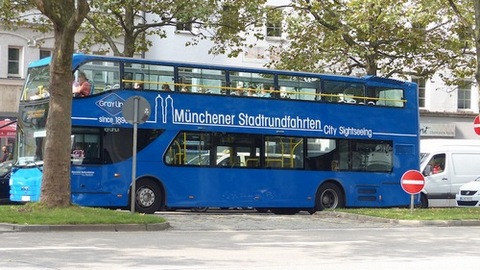
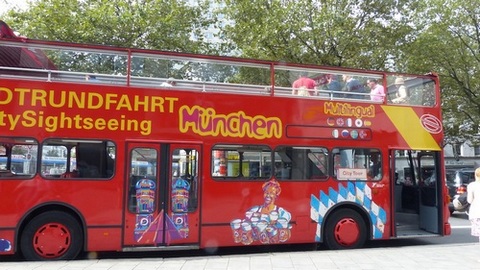
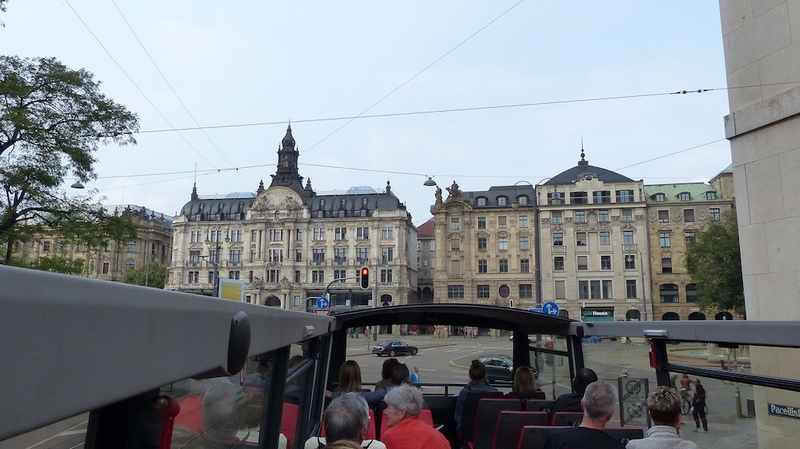
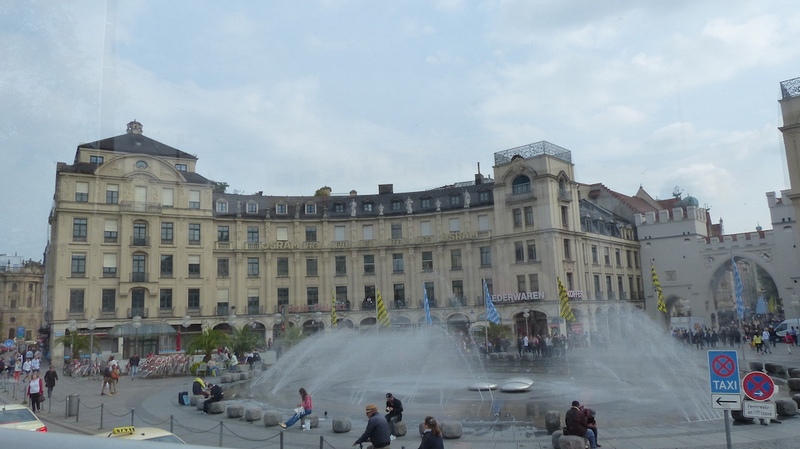
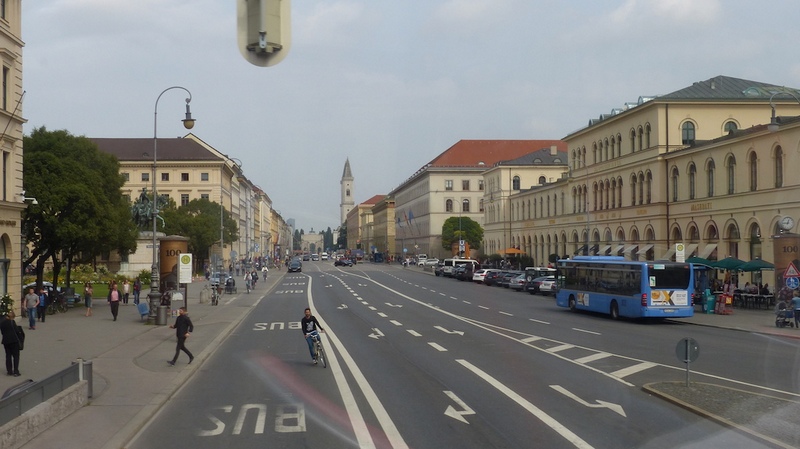
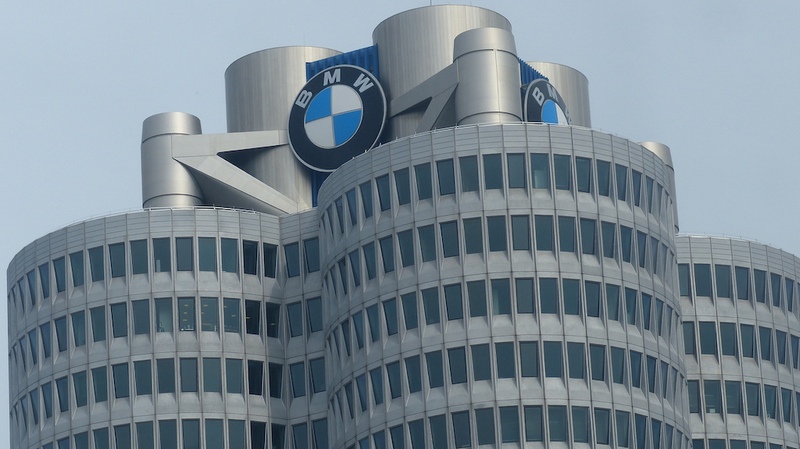
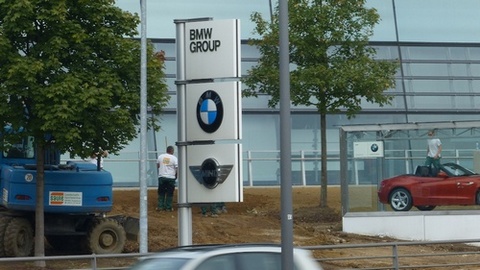
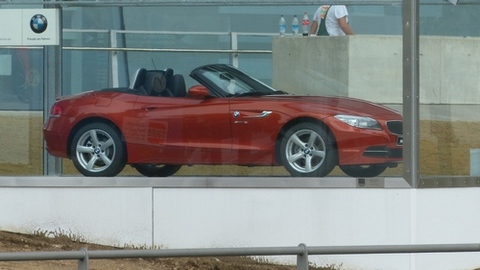
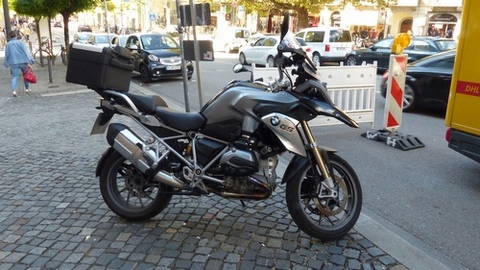
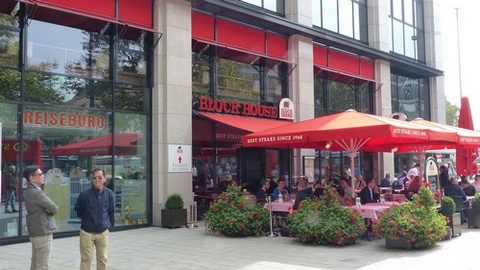
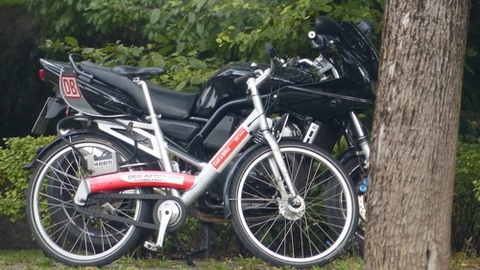
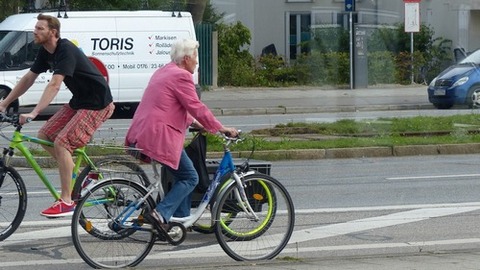
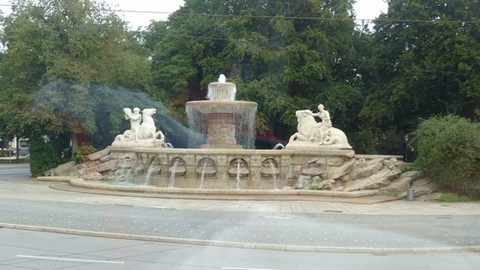
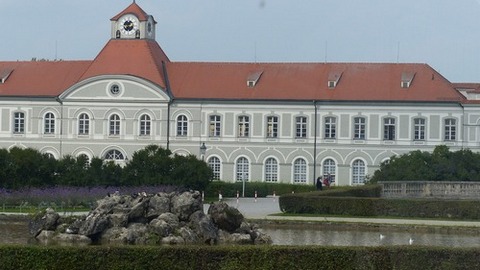
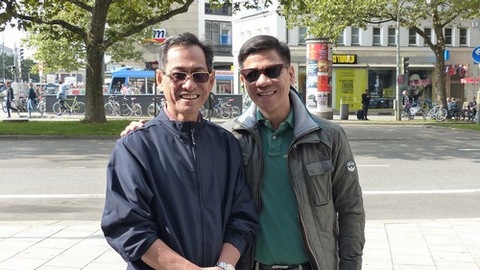
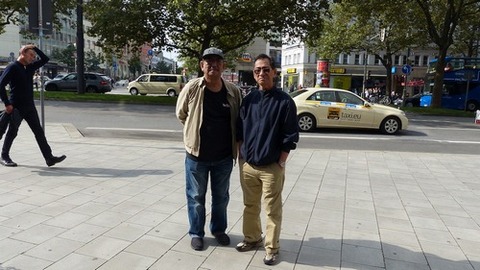
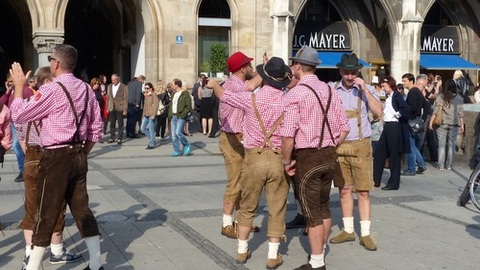
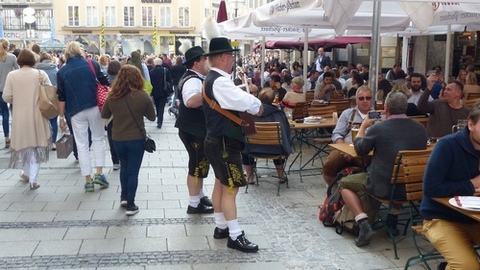
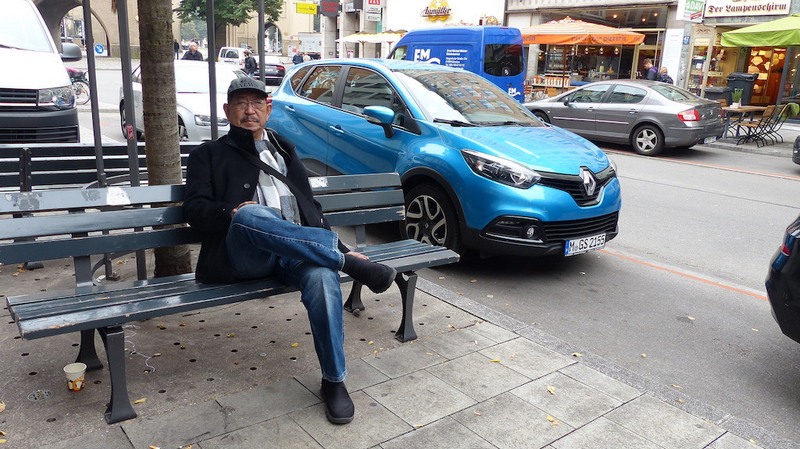
München, werde ich wieder !!
(Munich, I will be back !!)